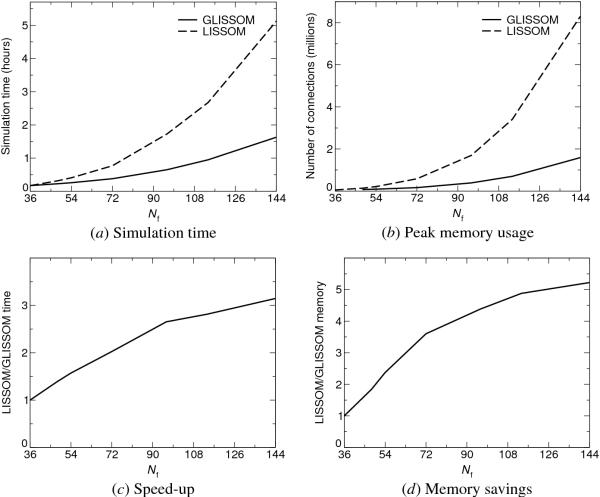
Click on the image to see a PDF version (for zooming in)
Fig. 15.10. Simulation time and memory usage in LISSOM vs.
GLISSOM. Computational requirements of the two methods are shown as a
function of the network size. In the LISSOM simulations the network
had a fixed size Nf, as indicated on the x-axis; in GLISSOM
the initial size was No = 36 and the final size
Nf as indicated on the x-axis. Each point represents one
simulation; the variance between multiple runs was negligible (less
than 1% even with different input sequences and initial weights). (a)
Simulation time includes training and all other computations such as
plotting, orientation map measurement, and GLISSOM's scaling
steps. The simulation times for LISSOM increase dramatically with
larger networks, because larger networks have many more connections to
process. In contrast, because GLISSOM includes fewer connections
during most of the self-organizing process, its computation time
increases only modestly for the same range of Nf. (b)
Memory usage consist of the peak number of network connections
required for the simulation; this peak determines the minimum physical
memory needed when using an efficient sparse format for storing
weights. LISSOM's memory usage increases very quickly as Nf
is increased, whereas GLISSOM is able to keep the peak number low;
much larger networks can be simulated on a given machine with GLISSOM
than with LISSOM. (c,d) With larger final networks, GLISSOM results in
greater speed-up and memory savings, measured as the ratio between
LISSOM and GLISSOM simulation time and memory usage.
|